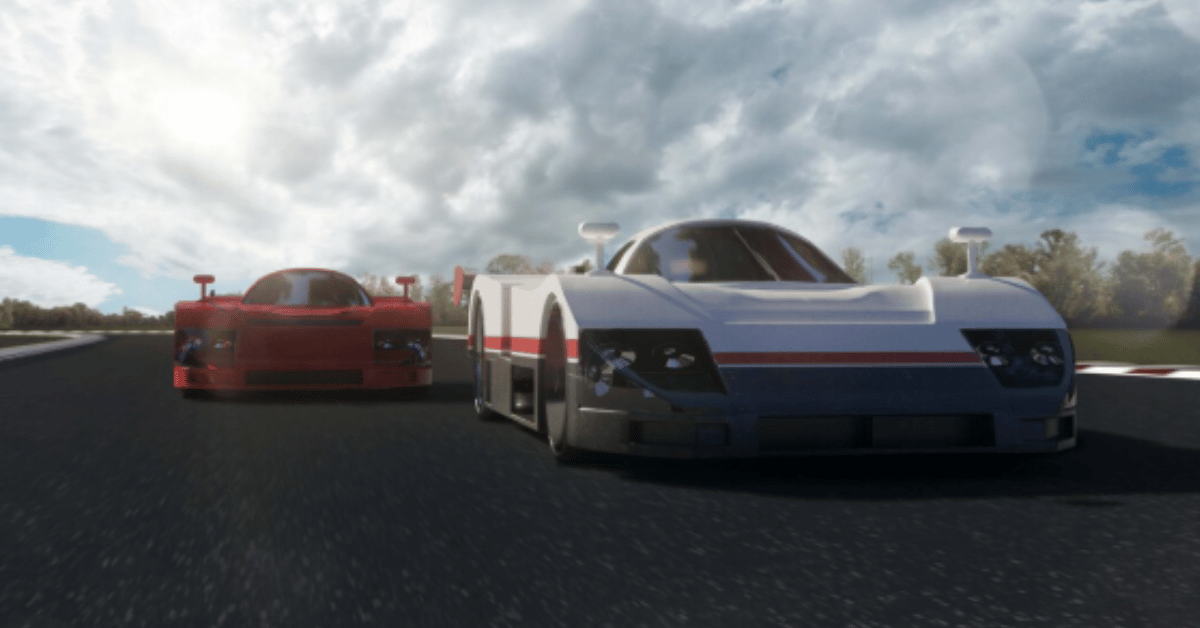In motorsport, names often carry more than a logo or reputation—they embody engineering ideals, racing cultures, and the drive to surpass speed boundaries. Arias Racing represents such a tradition, standing as both a competitive movement and a technical brand that has influenced how engines are built, tuned, and raced. The essence of Arias Racing lies not only in its performance parts but also in its dedication to speed, precision, and relentless pursuit of excellence. For enthusiasts searching what Arias Racing is about, it is both a motorsport legacy and an engineering philosophy that has shaped racing engines across different decades. Within the first glance, Arias Racing reflects the spirit of speed—where horsepower is matched by innovation, and tradition meets modern engineering.
Understanding Arias Racing requires peeling back layers of history, from the workshops that built pioneering pistons to the tracks where finely tuned engines roared past competitors. It is a story that extends beyond competitions—it touches the lives of mechanics, engineers, and drivers who view performance not as luxury but as a necessity. Racing is a test of limits, and Arias Racing answers that challenge with technology designed for ultimate durability and power. Whether in drag racing, circuit performance, or even street applications, Arias components are considered symbols of reliability, much like the steel backbone of motorsport engineering. As one veteran mechanic once said, “You don’t just install an Arias part—you install confidence.” This article explores Arias Racing in depth: its beginnings, its engines, its competitive culture, and its future in the ever-evolving automotive industry.
The Origins of Arias Racing
Arias Racing traces its roots back to an era when racing was as much about garage innovation as it was about speed. The brand emerged from the workshop of Nick Arias Jr., a pioneer who understood that pistons—the heart of an engine—were often the weakest point under extreme pressure. His vision was to design pistons strong enough to withstand racing abuse yet light enough to maintain efficiency. Arias forged his reputation in drag racing during the mid-20th century, where high-compression engines demanded specialized components. What set Arias apart was not only the design but also the relentless testing under real track conditions, where failures quickly separated quality from gimmick.
The early years of Arias Racing coincided with the golden age of American motorsport. Hot rod culture was booming, and drag strips were filled with self-built cars hungry for recognition. Arias pistons became a hallmark of reliability, trusted by professional teams and weekend racers alike. More importantly, they became synonymous with innovation: experimenting with dome shapes, metallurgy, and thermal coatings long before such practices became industry standards. Over time, Arias Racing grew into a brand recognized internationally, not simply for selling parts but for advancing the very science of performance engines. As Arias himself often remarked, “Every piston tells a story, and mine are built for victories.”
Technical Foundations of Arias Racing
At its core, Arias Racing is defined by its engineering approach. The brand emphasized piston geometry, combustion efficiency, and strength-to-weight optimization as cornerstones of performance. Unlike mass-manufactured engine parts, Arias pistons were meticulously crafted with a balance of strength and precision. In high-performance racing, where temperatures exceed 1,200 degrees Fahrenheit and pressures climb to extreme levels, reliability cannot be compromised. Arias introduced forged aluminum pistons with reinforced skirts and advanced alloys, offering resistance against both detonation and thermal stress.
One of Arias Racing’s technical strengths lies in its focus on compression ratios and dome configurations. By optimizing how air-fuel mixtures combust, engines fitted with Arias pistons often achieved superior torque curves and horsepower gains. This wasn’t just about brute force—it was about efficiency, where every cubic inch of displacement delivered maximum return. Over time, Arias expanded into custom piston solutions, serving not only drag racers but also endurance teams and even motorcycle racers. The adaptability of Arias technology remains a key reason why the brand continues to attract loyal supporters across motorsport categories.
Table 1: Key Technical Contributions of Arias Racing
| Feature/Innovation | Contribution to Racing Performance | Lasting Impact in Motorsport |
|---|---|---|
| Forged Aluminum Pistons | Increased strength and reduced weight | Standard in high-performance builds |
| Dome-Shaped Piston Design | Optimized combustion efficiency, higher compression ratios | Improved torque and horsepower delivery |
| Advanced Thermal Coatings | Better heat resistance under extreme conditions | Extended engine life in drag racing |
| Custom Piston Applications | Adaptability across drag, circuit, and street racing | Broadened Arias Racing’s market reach |
| High-Stress Testing Protocols | Validated parts under real race conditions | Built trust among professional racers |
Arias Racing in Competitive Motorsport
The competitive history of Arias Racing is deeply intertwined with drag racing, where fractions of a second determine legends. Arias pistons became the secret weapon of numerous teams in NHRA (National Hot Rod Association) events, where reliability under explosive acceleration mattered more than anything else. Racers who equipped their engines with Arias pistons often found themselves with fewer breakdowns and consistent performance across repeated runs. Beyond drag strips, Arias Racing made its mark in endurance competitions, where engine parts must survive not seconds but hours of brutal operation. The adaptability of Arias technology meant that it wasn’t limited to a single form of racing.
Perhaps one of the most overlooked contributions of Arias Racing was its influence in grassroots motorsport. Amateur racers could access parts built to professional standards, allowing weekend warriors to push their cars harder without fear of catastrophic engine failure. This democratization of performance parts helped expand motorsport participation. It turned Arias Racing into more than just a manufacturer—it became part of the culture. Drivers proudly displayed “Arias” stickers on their cars, not as mere branding but as proof of durability under pressure.
Cultural Significance of Arias Racing
Motorsport is not just about machines; it is about identity. Arias Racing became part of a subculture where mechanics, drivers, and fans connected over shared values of resilience and speed. In workshops across America, Arias pistons were spoken about in the same way athletes discuss legendary shoes—symbols of trust and performance. Even outside professional racing, Arias Racing influenced car communities, from hot rods to import tuners who admired the engineering ethos behind the brand.
Culturally, Arias Racing also symbolized independence. Unlike large corporations that mass-produced parts, Arias remained true to its roots: a smaller, specialized company that prioritized quality over volume. This gave the brand an almost cult-like following, where enthusiasts felt connected to the ingenuity of its founder. The sense of community was strengthened by countless stories of Arias-equipped cars breaking records, surviving extreme conditions, and delivering thrills unmatched by ordinary components. As one racing historian observed, “Arias didn’t just build pistons—they built legends that drivers trusted with their lives.”
Table 2: Arias Racing Across Motorsport Disciplines
| Motorsport Discipline | Role of Arias Racing Components | Resulting Advantages for Racers |
|---|---|---|
| Drag Racing | Withstood explosive acceleration and high stress | Consistent quarter-mile performance |
| Circuit Racing | Delivered durability over long sessions | Reduced mechanical failures during endurance |
| Street Racing | Provided balance of power and reliability | Expanded appeal among grassroots racers |
| Motorcycles | Enhanced small engine output | Better torque and responsiveness |
| Hot Rod Culture | Symbol of high-performance engineering | Legacy status in American car history |
The Future of Arias Racing
While Arias Racings began with mechanical innovation, its future lies in adapting to evolving automotive landscapes. Today’s motorsport faces challenges such as electrification, hybrid technologies, and stricter emissions standards. For a company rooted in piston design, the question arises: what role will Arias Racings play when internal combustion engines face decline? Industry observers suggest that Arias’s engineering expertise may find applications in hybrid motors, where lightweight pistons are still essential for efficiency. Furthermore, specialized racing categories that remain loyal to combustion engines—such as drag racing—will continue to provide Arias Racings with relevance.
Another possible direction is historical preservation. As classic racing cars remain prized possessions, Arias components will likely serve as key elements in restoration projects, keeping vintage performance alive. The brand may also leverage its legacy into collaborations with modern automotive companies, bridging old-school reliability with new-age performance. Ultimately, the future of Arias Racing depends not only on its ability to innovate but also on its capacity to preserve its identity—a legacy of resilience, precision, and speed.
Conclusion
Arias Racing stands as a story of passion turned into engineering brilliance, a legacy built on the belief that performance comes from precision. From drag strips to circuit tracks, from hot rods to motorcycles, Arias pistons have proven themselves under the harshest conditions, earning loyalty and respect among drivers and mechanics worldwide. Its contributions extend beyond mechanical parts—they shape racing culture itself, reminding us that speed is both science and art.
As motorsport enters a new era, the question of Arias Racing’s future becomes part of a larger conversation about tradition and innovation. What is clear, however, is that the spirit of Arias Racings—resilience, performance, and trust—remains timeless. Just as an old mechanic once said, “Engines may change, but the heart of racing stays the same, and Arias is part of that heart.”
FAQs
Q1: What makes Arias Racing pistons different from standard performance pistons?
Arias Racings pistons are forged using advanced alloys, designed to endure extreme heat and stress in high-performance racing environments. Unlike standard pistons, which often prioritize affordability over durability, Arias pistons focus on precision geometry, optimized dome shapes, and thermal resistance. This combination ensures higher compression ratios, improved combustion efficiency, and reduced chances of mechanical failure under extreme racing conditions. Professional racers value Arias pistons because they provide both reliability and consistency—qualities essential in motorsport, where small failures can decide outcomes.
Q2: In which motorsport categories has Arias Racing had the greatest impact?
Arias Racings has significantly influenced drag racing, endurance circuit racing, motorcycle competitions, and grassroots street performance. Its strongest presence has historically been in drag racing, where engines endure explosive acceleration and require uncompromised durability. Circuit and endurance racings teams also adopted Arias components for their ability to withstand hours of operation without breakdowns. Beyond professional categories, Arias has left a mark on hot rod culture and amateur racing communities, making its reach far broader than elite motorsport circles.
Q3: How does Arias Racing contribute to engine efficiency beyond just adding horsepower?
While horsepower gains are a visible outcome, Arias Racing’s true contribution lies in efficiency. The company focuses on combustion optimization through piston dome design and weight reduction, allowing engines to extract more power from the same fuel volume. This means higher torque, smoother performance curves, and improved fuel efficiency under competitive conditions. Such engineering advancements not only enhance performance but also prolong engine life, making Arias pistons an investment for both professional teams and enthusiasts seeking sustainable reliability.
Q4: What role does Arias Racing play in grassroots motorsport and car culture?
Arias Racing’s widely respected for making professional-grade parts accessible to grassroots racers. Weekend drag racers, street performance enthusiasts, and hot rod builders could integrate Arias pistons into their builds, achieving higher performance without the risk of catastrophic failure. This accessibility strengthened Arias Racing’s cultural footprint, turning it into a trusted brand not just for elite competitors but also for everyday mechanics and car enthusiasts. It helped democratize motorsport by narrowing the gap between professional and amateur engineering standards.
Q5: What is the future outlook for Arias Racing in an era of hybrid and electric vehicles?
Although the automotive industry is shifting toward hybrid and electric powertrains, Arias Racing’s expertise remains relevant. Combustion engines will continue to dominate drag racing, classic car restorations, and niche motorsport categories where performance parts like pistons are indispensable. Arias may also evolve by applying its engineering know-how to hybrid engine components, where lightweight and efficient pistons still play crucial roles. Furthermore, the brand’s historical significance ensures it will remain valuable in restoration markets, keeping racing heritage alive.











